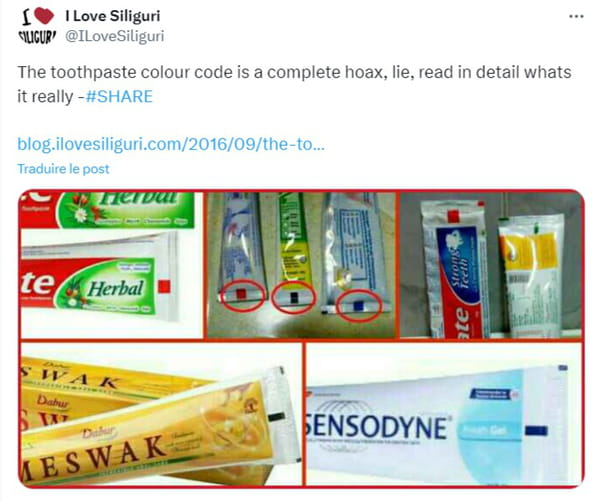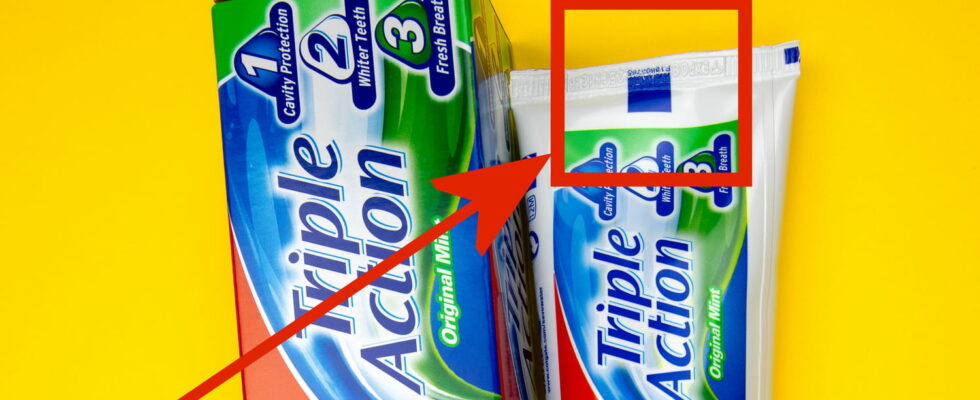The presence of colored squares at the end of toothpaste tubes has a very simple explanation that few people know.
For most consumers, the packaging of products sold in stores is a mystery. With the exception of a few very popular logos and pictograms, the packaging is covered with codes, images and sometimes numbers with unknown meanings. For food products, these are often recycling or sorting logos concerning the packaging. Cleaning or hygiene products have logos concerning safety, both for health and for the environment.
But some consumers have attributed to pictograms a meaning that is more of an urban legend than a real explanation. Theories that are sometimes invented out of whole cloth can become widely democratized via social networks. This is the case, for example, of a belief about tubes of toothpaste sold in supermarkets, which have a colored square at the end that changes depending on the brand.

As stated by the Daily Maila theory has recently spread online, mainly on TikTok, that the color of these squares indicates whether the toothpaste is made with more or less natural ingredients. According to this theory, the black and red squares would mean that the product is largely or completely composed of chemical ingredients, while the green and blue ones would reveal more natural ingredients.
Which is completely false, as confirmed by major brands and dentists who give the real explanation behind the presence of these squares. These professionals claim that these squares are actually a marker for the sensors of toothpaste production plants, which allows them to detect the end of the tube, in order to cut it in the right place and thus have a compliant packaging. As relayed by the Daily Mail, this theory reached the Colgate brand which itself reacted and called this online explanation a “hoax” and added: “Despite the craze for secret codes to decipher, there is nothing to discover here because this story is totally false.”
According to the Canadian company Silverhill Dental Ontario-based company, “the colored square on the end of the tubes does not reveal any information about the product’s composition and should not be considered when choosing a toothpaste.”
However, recipes for “homemade” toothpaste have seen their popularity skyrocket. Recipes that often contain too much acidic lemon juice or baking soda, too abrasive for the gums and tooth enamel. Charcoal has also become a common product in dental hygiene for its whitening properties. But using charcoal for this purpose would not be without risk, according to the British Dental Journal and conducted by a group of British researchers.
